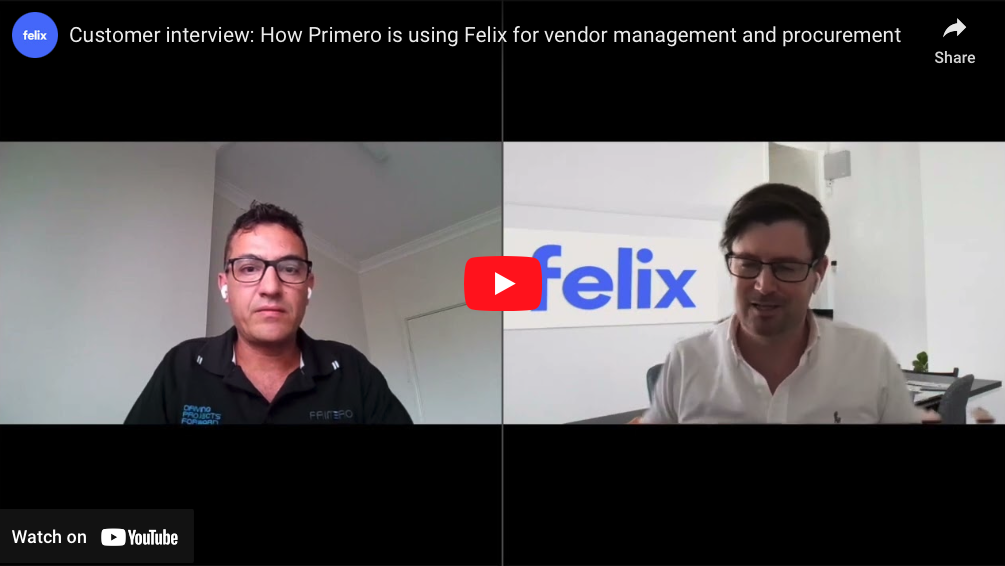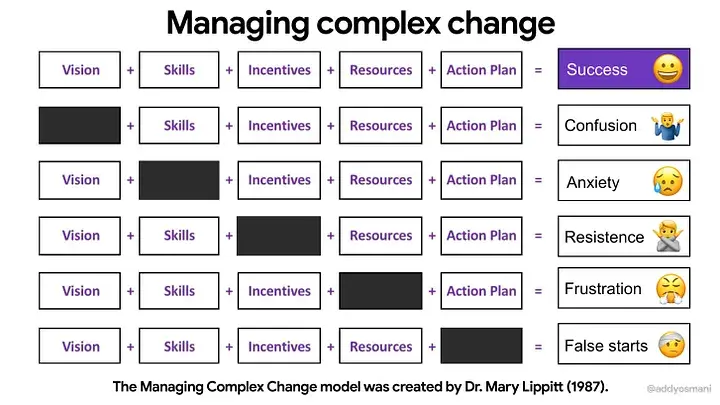Why off-the-shelf procurement software trumps low/no-code systems for enterprise needs

In today's fast-paced business environment, procurement and vendor management play a critical role in optimising costs, streamlining processes, and mitigating risks. While low/no-code (L/NC) systems offer an attractive option for rapid development and customisation, they often fall short when addressing the complexities of enterprise-level procurement needs. Off-the-shelf Commercial Off-The-Shelf (COTS) software emerges as the more robust and reliable solution in the long run.
Here's a comprehensive analysis of why COTS software reigns supreme for managing enterprise procurement.
What are Low/No-Code and Commercial Off-The-Shelf systems?
Before we dive in, let us first define what these terms mean.
Low-code and no-code are IT terms that refer to a system or software development method that requires little to no coding. Likewise, L/NC systems used in procurement will require minimal coding knowledge and allow users to easily customise and develop their own processes without writing code line by line.
COTS software, on the other hand, is usually a standard offering accessible to practically anyone who needs it. COTS software is ready to be implemented once purchased. However, this type of software allows limited customisation that will cater to the specific needs of an organisation or user.
Leveraging industry expertise: standing on the shoulders of giants
COTS solutions represent the culmination of years, often decades, of development. They are built upon the collective experience and insights of numerous customers across diverse industries.
This translates to a feature-rich product that has undergone extensive testing and refinement. COTS vendors continuously invest in research and development, ensuring their software remains current with evolving procurement best practices and integrates with the latest technologies.
Building a custom L/NC solution, on the other hand, requires your team to "reinvent the wheel." They must learn from scratch the lessons already addressed and incorporated into established COTS solutions. This can be a time-consuming and resource-intensive process, delaying roll-out and potentially exposing your team to technical pitfalls already navigated by COTS vendors.
Faster implementation and reduced IT burden: getting up and running quickly
Time is money, especially in the procurement realm. COTS software offers the distinct advantage of being ready to deploy out of the box. With pre-configured features and intuitive interfaces, implementation timeframes are significantly reduced compared to building a system from scratch with L/NC tools. This allows your team to begin reaping the benefits of automation and efficient procurement practices sooner.
Furthermore, COTS solutions typically do not require coding expertise thanks to their user-friendly interfaces. This frees up your IT resources to focus on core business needs such as data migration, system integration, and user training.
L/NC systems, while touted as citizen-developer friendly, still require a level of systems expertise for tasks like designing data models, crafting user interfaces, and ensuring robust system architecture. These skills may not be readily available within your team, necessitating hiring or outsourcing expertise. This adds to the overall cost and complexity of the L/NC approach.

Scalability and technical expertise: Handling growth with ease
As your organisation grows, so too will your procurement needs. While L/NC systems offer impressive flexibility, their capabilities are ultimately limited by their configuration options. Complex business needs may necessitate significant customisation efforts, potentially pushing the boundaries of the L/NC platform. This can lead to system instability, performance issues, and a need for further development resources.
COTS solutions are built to handle large volumes of data and intricate procurement processes. They boast a higher ceiling for handling technical complexity and can be readily scaled to accommodate your organisation's growth.
Moreover, COTS vendors are constantly updating their software to address evolving needs, ensuring you have access to the latest features and functionality without the need for constant in-house development efforts.
Security and compliance: Peace of mind and reduced risk
Data security and privacy are paramount concerns in today's digital world, especially when dealing with sensitive procurement information.
(Check out our previous webinar with Eftsure about security threats lurking in your supply chain for more insights on the evolving threat landscape.)
Building an L/NC system necessitates meticulous development practices to ensure adherence to best practices in data protection. Achieving accreditation with international standards like ISO27001 and GDPR adds another layer of complexity and ongoing effort. This requires deep security expertise that again, may not be readily available within your team.
COTS solutions often come pre-accredited with such standards. These vendors have robust security protocols and well-defined processes for data handling, saving your team the time and resource burden of replicating these practices internally.
Additionally, COTS vendors are constantly updating their software with the latest security patches and mitigation strategies, ensuring your data remains protected against evolving cyber threats.
(See how Felix’s security measures are safeguarding you and your supply chain.)
Future flexibility and exit strategy: Avoiding vendor lock-in
Replacing a software system is an inevitable possibility, whether due to changing business needs or vendor limitations. While COTS solutions typically share standard functionalities and industry best practices, transitioning to a new vendor is a relatively straightforward process. The data structures and business processes are often aligned, making it easier to migrate information and workflows to a different COTS platform.
Highly customised L/NC systems, on the other hand, often become dependent on specific in-house expertise. This expertise might reside with the developers who built the system or reside in undocumented procedures. Replacing such a system can be a complex and costly endeavour.
Unravelling a bespoke platform built by previous employees can be a logistical nightmare, requiring significant time and resources to decipher its functionality and rebuild it on another platform. In the worst-case scenario, you might be forced to re-enter vast amounts of data manually.
Total Cost of Ownership (TCO): A long-term perspective
While L/NC systems might appear cheaper upfront due to lower licensing fees, the true cost of ownership extends beyond the initial purchase. The hidden costs associated with L/NC systems include:
- Development and ongoing maintenance: Costs associated with internal development, hiring external developers, or ongoing maintenance contracts.
- Support and training: Costs associated with building internal expertise or outsourcing support needs.
- Security and compliance: Costs associated with implementing best practices and maintaining ongoing compliance with security regulations.
- Scalability and upgrades: Costs associated with adapting the L/NC system to accommodate growth or changes in functionality.
COTS solutions offer a more predictable TCO. The upfront licensing fees typically cover ongoing support, access to updates and new features, and a defined level of security maintenance. This simplifies budgeting and reduces the risk of unexpected expenses down the road.

Conclusion: A strategic investment in enterprise procurement
L/NC systems offer a low barrier to implementing flexible solutions for basic procurement workflows. However, for enterprise-level procurement needs, the advantages of COTS software outweigh the initial appeal of L/NC.
COTS solutions offer a robust, secure, and future-proof platform with minimal implementation burden and ongoing support.
While there might be an upfront investment, the long-term benefits of leveraging established features, expertise, and scalability make COTS software the smarter choice for managing complex procurement operations.
Additionally, COTS solutions allow your team to focus on core business strategies rather than becoming bogged down by system development and maintenance. In today's competitive business environment, a streamlined and efficient procurement process is a strategic advantage. COTS software empowers organisations to achieve this advantage while minimising risk and maximising return on investment.
---
Want to learn more about how a COTS solution like Felix can help streamline vendor management and procurement processes? Get in touch with our team today.
Related Articles

Webinar recap: How Primero's procurement manager uses Felix
Recently, I had the pleasure of interviewing Glen Ercegovich from Primero - a Felix customer. Here is a recap of some of the highlights from the session.

Why digital procurement transformation fails (and what to do instead)
The digital revolution is transforming every aspect of business, and procurement is no exception. Organisations are increasingly embracing digital procurement and vendor management solutions to streamline processes, improve efficiency, and gain valuable insights into their supply chains. However, despite the potential benefits, a significant number of digital transformation initiatives in procurement fall short of expectations.

Giving your procurement process & governance a health check
Procurement governance has never been a particularly exciting topic. Given increasing compliance requirements, procurement has given and been given a host of policies and guidelines to follow. But is it enough to mitigate procurement risks and ensure compliance?
Let's stay in touch
Get the monthly dose of supply chain, procurement and technology insights with the Felix newsletter.



